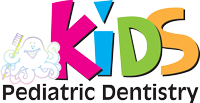Preventing and overcoming dental anxiety is very important. Some children love coming to the dentist from day one, whereas others take time to warm up. If your child gets upset during the visit, rest assured that it is normal behavior because they are in an unfamiliar situation – please do not be alarmed or embarrassed. We are all trained to help fearful or anxious children through their dental experience, and as your child matures, we hope to encourage his or her independence and promote self esteem.
If your child is older and has not been to the dentist yet, you should discuss the positive aspects of dentistry with them before the appointment. Try to act relaxed and at ease because if you are stressed and anxious, your child will likely be stressed and anxious as well.
Please avoid mentioning to your child that the dentist may not hurt him/her, as the possibility of pain may have never entered into your child’s mind at all. Instead, reassure your child that Dr. Lisi/Dr. Alina and our team will be friendly and gentle. Also, avoid using words such as needle, shot, pull, drill, or other words that could create anxiety. We will explain our procedures in ways that your child can understand and will work to decrease any fear or anxiety they may have. For example, we call the suction device “Mr. Thirsty” and the cavities “sugar bugs” to make the dental environment more fun and unthreatening to your child.
A common problem that children face is being fearful about coming to the dentist because they are unsure about what will happen. It is normal to be scared of the unknown, and we work with kids every day to help them feel more comfortable so that they can establish a positive relationship with our staff.
There are several things we do to help kids feel comfortable in our office. For example, we don’t rush them into treatment, as some kids take a while to warm up to our staff. We talk to the kids while they are in the treatment areas, and we show them what we will be doing using words that are age-appropriate. Dr. Lisi’s “tell, show, and do” principle helps smooth concerns your child may have.
If you have any specific concerns about your child’s (first) visit, we would love to talk to you about them ahead of time. Please call our office or email us at your earliest convenience.
